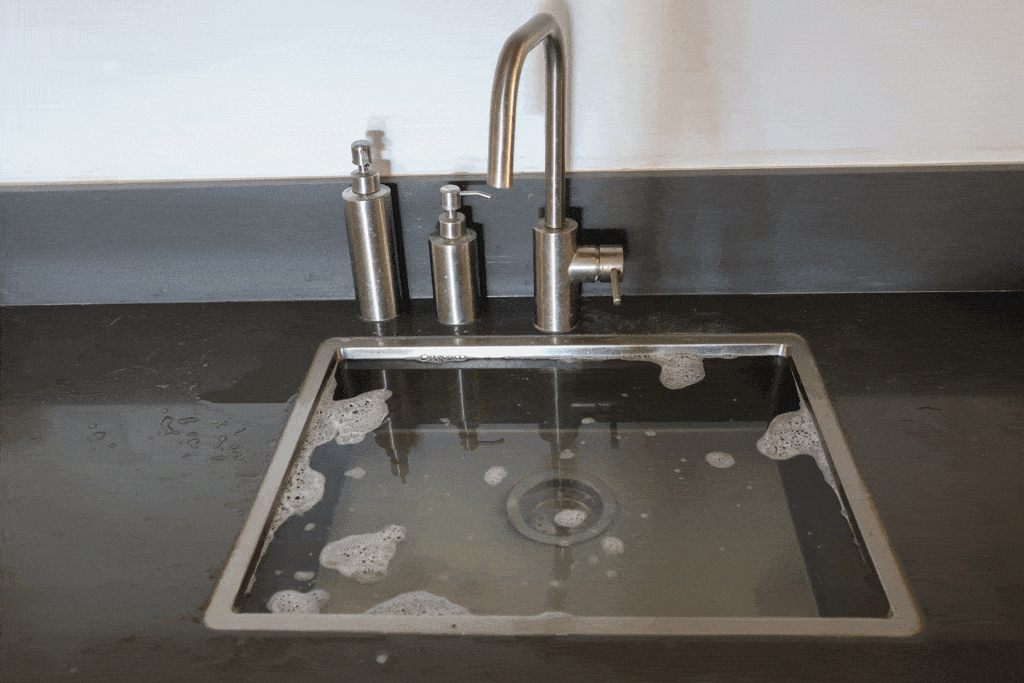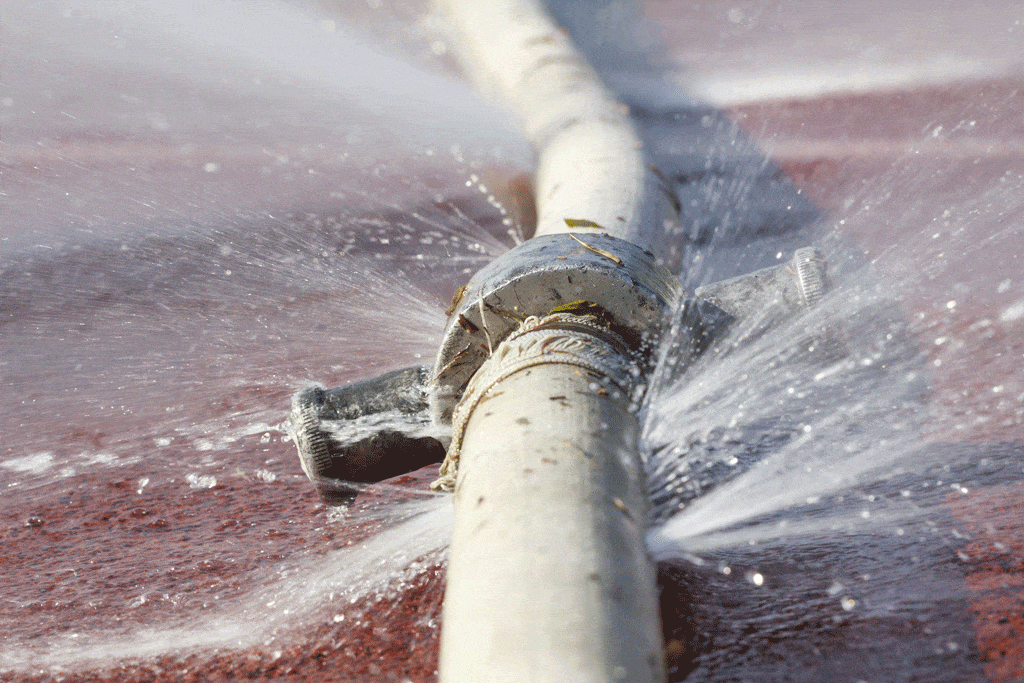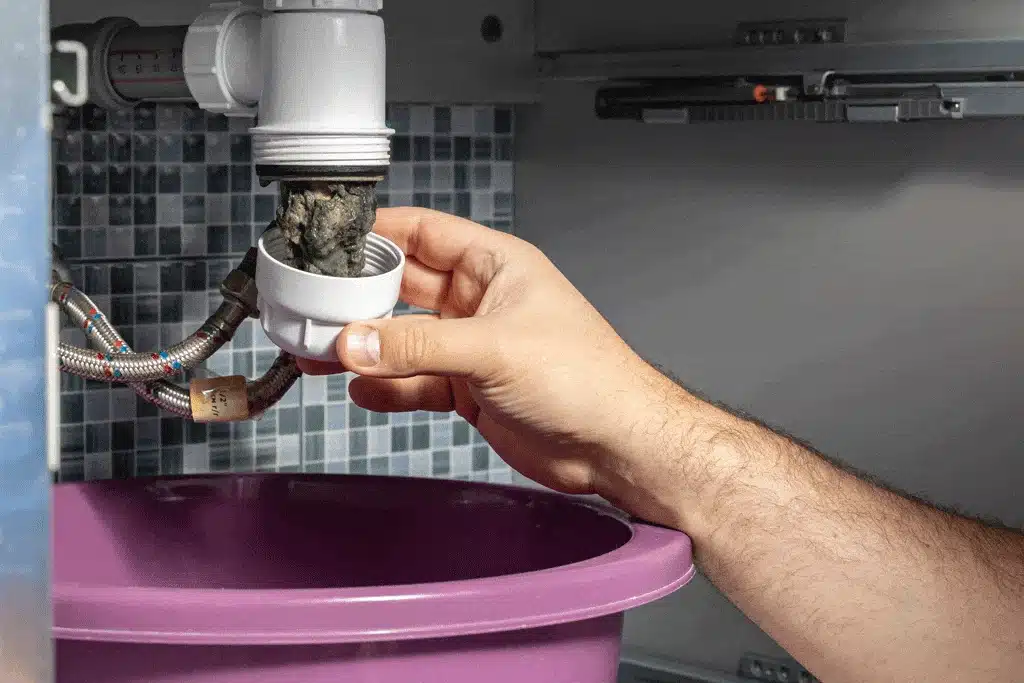Greywater Recycling Systems – Did you know that the water you use every day could have a second life?
Each time you wash your hands, do laundry or water your plants, you’re using valuable water that usually goes straight down the drain.
But what if that water could be reused, helping you cut down on waste and conserve resources? Let’s explore how greywater recycling systems make this possible!
What is Greywater?
Before diving into how greywater recycling systems work, let’s clarify what greywater is. Greywater is the relatively clean waste water from baths, sinks, washing machines, and other kitchen appliances.
Unlike sewage water or “blackwater,” which includes toilet waste, greywater doesn’t contain fecal contamination and is easier to treat and reuse.
Water recycling is crucial in addressing the growing issues of water scarcity and environmental sustainability.
Implementing greywater recycling systems allows homeowners to conserve water, reduce their ecological footprint, and save money.
These systems offer a practical and efficient way to manage and reuse water, ensuring that every drop counts.
Benefits of Greywater Recycling Systems
Saving Water
In places like Bedford, TX, Euless, TX, and Grapevine, TX, where water conservation is becoming increasingly important, greywater recycling systems can reduce household water usage by up to 40%.
This translates to significant savings on water bills and reduces the strain on municipal water supplies.
By reusing greywater for tasks such as irrigation and toilet flushing, households can make a substantial impact on their overall water consumption, helping to preserve this precious resource for future generations.
Reducing Environmental Impact
By reusing greywater, we reduce the volume of wastewater needing treatment at sewage facilities, decreasing energy usage and chemical use in water treatment plants.
This reduction in treated wastewater means fewer pollutants are released into the environment, leading to cleaner rivers, lakes, and oceans.
Additionally, less energy consumption at treatment facilities contributes to a decrease in greenhouse gas emissions, further benefiting the environment.
Fostering a Sustainable Lifestyle
Implementing a greywater recycling system at home can be a step towards a more sustainable lifestyle, encouraging us to be more conscious of our water resources and how we manage them.
By actively participating in water conservation, homeowners set a positive example for their communities and promote a culture of sustainability.
This conscious effort not only helps in resource conservation but also fosters a deeper understanding and appreciation of our natural environment.
Enhancing Garden and Landscape Health
Greywater recycling systems provide an excellent source of irrigation for gardens and landscapes.
The nutrients found in greywater can benefit plants, enhancing soil quality and promoting healthier growth.
This sustainable irrigation method ensures that plants receive adequate water even during dry periods, maintaining lush and vibrant gardens without relying on potable water supplies.
Increasing Property Value
Homes equipped with greywater recycling systems can see an increase in property value. Prospective buyers often view these systems as a valuable addition, reflecting the property’s commitment to sustainability and cost-efficiency.
By investing in a greywater system, homeowners not only enjoy immediate benefits but also enhance the long-term value and appeal of their property.
How Greywater Systems Work
Basic Principles of Greywater Recycling
Greywater recycling systems operate on a simple yet effective principle: collecting relatively clean wastewater from household sources and treating it for reuse.
This system ensures that water from showers, sinks, and washing machines doesn’t go to waste but is instead repurposed for other non-potable uses like irrigation and toilet flushing. By diverting greywater from the sewage system, households can significantly reduce their overall water consumption.
Overview of the Process from Collection to Reuse
The greywater recycling process involves several key steps:
- Collection: Greywater is collected from various household sources, including sinks, showers, and washing machines.
- Filtration: Once collected, the greywater undergoes initial filtration to remove larger particles and debris.
- Treatment: The filtered greywater is then treated using biological, chemical, or mechanical processes to remove any remaining contaminants.
- Storage: After treatment, the greywater is stored in tanks or containers until it is ready for use.
- Distribution: Finally, the treated greywater is distributed to various parts of the home for non-potable uses. Common applications include garden irrigation, toilet flushing, and even cooling systems.
By understanding the basic principles and processes involved in greywater recycling, homeowners can better appreciate the benefits and functionality of these systems. Greywater recycling not only conserves water but also promotes a sustainable lifestyle, making it an essential component of modern home water management.
Components of Greywater Recycling Systems
Collection and Plumbing
The collection of greywater begins at the source. Collection and plumbing systems are designed to capture greywater from sinks, showers, and washing machines.
These systems require specialized plumbing to keep greywater separate from blackwater, ensuring it remains relatively uncontaminated.
Diverter valves are often installed to direct greywater to dedicated collection pipes that lead to a central storage unit.
Storage Tanks and Containers
After collection, greywater is stored in tanks or containers. These storage units are crucial for managing the timing and quantity of greywater reuse.
Tanks are typically constructed from materials that prevent corrosion and inhibit the growth of harmful bacteria.
Advanced storage systems may include features like aeration to keep the water oxygenated and sensors to monitor water quality and levels.
Filtration and Treatment Methods
Effective filtration and treatment are essential for ensuring greywater is safe for reuse. The initial filtration stage removes large particles through mesh filters or sediment traps.
Following this, the greywater undergoes treatment to eliminate pathogens and organic contaminants. Treatment methods can vary:
- Biological treatment uses natural processes involving microorganisms to break down organic matter.
- Chemical treatment employs disinfectants like chlorine or ozone to kill bacteria.
- Mechanical treatment can include advanced filtration systems such as sand filters or membrane bioreactors.
Distribution Systems
The final stage is the distribution system, which delivers treated greywater to various parts of the home for reuse. This system includes piping and fixtures tailored for specific uses, such as:
- Irrigation systems: Drip irrigation or sprinkler systems that use greywater to water lawns and gardens.
- Toilet flushing: Modified plumbing that uses greywater to refill toilet tanks.
- Cooling systems: Certain cooling systems can utilize greywater for temperature regulation.
Each component of a greywater recycling system plays a pivotal role in its overall functionality, ensuring water is collected, treated, and reused efficiently.
Types of Greywater Systems
Simple Systems
Simple greywater systems, such as the laundry-to-landscape setup, are easy to install and maintain. These systems typically involve diverting greywater from a single source, like a washing machine, directly to a landscape area for irrigation.
The process requires minimal treatment since the water is immediately used to hydrate plants. These systems are cost-effective and ideal for homeowners looking to make a small yet significant impact on their water usage.
Advanced Systems
Advanced greywater systems are more complex and capable of handling larger volumes of greywater from multiple sources within the home.
Examples include pumped systems and constructed wetlands. Pumped systems collect greywater in a central tank, where it is filtered and treated before being pumped to various points of use.
Constructed wetlands use natural processes to treat greywater by filtering it through a series of planted beds, which break down contaminants and purify the water. These systems require more significant investment and professional installation but offer greater efficiency and versatility.
Comparison of Different System Complexities
When choosing between simple and advanced systems, several factors come into play:
- Installation Complexity: Simple systems are typically DIY projects, while advanced systems often require professional installation.
- Maintenance Requirements: Advanced systems need regular maintenance to ensure effective operation, whereas simple systems have lower upkeep.
- Cost: Simple systems are more affordable initially and have lower operational costs. Advanced systems, while more expensive, provide greater water reuse potential and environmental benefits.
- Water Savings: Advanced systems can recycle a larger percentage of household greywater, making them more suitable for homes with higher water usage.
Choosing the Right System for Your Home
Factors to Consider
When selecting a greywater recycling system, several factors need careful consideration:
- Household Water Usage: Assess your daily water usage to determine the volume of greywater your household generates. Homes with higher water consumption may benefit more from advanced systems that can handle larger volumes of greywater.
- Available Space: Evaluate the space available for installing the system. Simple systems typically require less space, while advanced systems might need dedicated areas for tanks, treatment units, or constructed wetlands.
- Budget Considerations: Budget is a crucial factor. Simple systems are cost-effective and easier to install, while advanced systems involve higher initial costs but offer greater water-saving benefits over time. Consider the long-term savings on water bills when evaluating the overall cost.
- Local Regulations and Permits: Check local regulations and obtain necessary permits before installing a greywater system. Regulations can vary significantly depending on location, so it’s important to ensure compliance to avoid legal issues.
Budget Considerations
When planning your budget for a greywater system, consider both the initial installation costs and the long-term savings.
Simple systems can often be installed for a few hundred dollars, while advanced systems might cost several thousand dollars due to the need for professional installation and more complex equipment.
However, the investment can be offset by significant reductions in water bills and the environmental benefits of reduced freshwater consumption.
Local Regulations and Permits
In areas like Bedford, TX; Euless, TX; and Grapevine, TX, it’s essential to be aware of local regulations governing greywater systems.
These regulations ensure that greywater is used safely and effectively, preventing any potential health hazards.
Before installation, contact local authorities to understand the requirements for permits and compliance, ensuring that your system meets all legal and safety standards.
Selecting the right greywater system involves balancing your household needs, budget, and regulatory requirements.
By carefully considering these factors, you can choose a system that provides maximum benefits and aligns with your environmental goals.
Installation and Maintenance
DIY vs. Professional Installation
One of the first decisions you’ll need to make when installing a greywater recycling system is whether to do it yourself or hire a professional.
DIY installation is feasible for simple systems, like the laundry-to-landscape setup. These systems typically come with straightforward instructions and require basic plumbing skills.
DIY installation can save you money on labor costs and give you greater control over the project.
On the other hand, professional installation is recommended for advanced greywater recycling systems, which involve more complex plumbing, treatment, and distribution components.
Professionals ensure that the system is installed correctly and complies with local regulations, reducing the risk of potential issues down the line.
Comprehensive Service
Hiring professionals means you receive a comprehensive service from start to finish. This includes:
- Initial Consultation: Assessing your home’s greywater potential, understanding your needs, and recommending the most suitable system.
- Design and Planning: Creating a customized design that fits your space, budget, and water usage patterns. Professionals consider all aspects, from collection and storage to filtration and distribution.
- Installation: Setting up the system with precision, ensuring all components are correctly installed and integrated. This involves meticulous plumbing work, secure connections, and thorough testing.
- Training: Educating homeowners on system operation and maintenance, ensuring you understand how to use your greywater recycling system effectively.
- Post-Installation Support: Providing ongoing support and maintenance services to keep the system running smoothly. Professionals offer regular inspections, cleaning, and troubleshooting, addressing any issues that may arise.
Maintenance Tips and Schedules
Regular maintenance is crucial for the efficient operation of a greywater recycling system. Here are some tips and schedules to follow:
- Monthly Checks: Inspect filters and clean or replace them as needed to prevent clogging. Check storage tanks for sediment buildup and clean if necessary.
- Quarterly Maintenance: Inspect the entire system for leaks, corrosion, or damage. Ensure all pumps and mechanical components are functioning correctly.
- Annual Service: Have a professional service the system once a year, especially if it’s an advanced setup. This includes thorough cleaning, component replacements, and overall system checks.
- Use Eco-Friendly Products: Use biodegradable and plant-friendly soaps and detergents to minimize harmful chemicals entering the greywater recycling system.
Proper installation and regular maintenance ensure that your greywater recycling system operates efficiently, providing maximum benefits in terms of water conservation and cost savings.
Safety Considerations
- Avoiding Cross-Contamination: Prevent cross-contamination between greywater and potable water by keeping them separate through dedicated plumbing and diverter valves. Regularly inspect and maintain these components to ensure proper function and safety in greywater recycling systems.
- Using Plant-Friendly Products: Use biodegradable, non-toxic soaps and detergents to minimize harmful chemicals in your greywater. Avoid products with high sodium, boron, or chlorine levels, as they can damage soil and plants, ensuring safe greywater reuse.
- Monitoring and Preventing System Failures: Install sensors and alarms to detect leaks and overflows. Regularly inspect tanks, filters, and plumbing for wear or damage, and address issues promptly to ensure the safe operation of your greywater recycling system.
- Ensuring Proper Filtration and Treatment: Ensure your system includes effective filtration to remove contaminants. Consider additional treatment methods like UV disinfection or chlorination for safer greywater reuse in irrigation and toilet flushing.
- Educating Household Members: Educate all household members on the greywater system’s operation and safety protocols. Emphasize using appropriate products and reporting any system issues promptly to maintain safety and efficiency.
By following these safety measures, you can ensure that your greywater recycling system operates efficiently and safely, providing benefits without compromising health or environmental standards.
Conclusion
Greywater recycling systems offer numerous benefits, including water conservation, reduced utility bills, and environmental sustainability. By reusing greywater for non-potable purposes like irrigation and toilet flushing, these systems reduce the demand on municipal water supplies and lower wastewater treatment volumes.
Whether you choose a DIY setup or a professionally installed system, regular maintenance ensures efficiency and safety, providing ongoing water savings and environmental benefits.
Ready to Save Water and Money?
For expert installation and maintenance of your greywater recycling system, contact Tioga Plumbing & Electric. Our team provides comprehensive services to help you achieve your water conservation and sustainability goals. Start saving water and money today!
FAQs
-
What is greywater?
Greywater is the relatively clean wastewater from baths, sinks, washing machines, and other kitchen appliances, excluding toilet waste. Greywater recycling systems collect and treat this water for reuse in non-potable applications.
-
Are greywater recycling systems safe for plants?
Yes, when properly treated, greywater is safe for most plants. Greywater recycling systems ensure that harmful chemicals and contaminants are removed, making the water suitable for irrigation.
-
Can greywater recycling systems be used for vegetable gardens?
Greywater recycling systems can be used for vegetable gardens if the water is adequately treated and not directly applied to the edible parts of the plants. It’s crucial to ensure the treated greywater meets safety standards for garden use.
-
How much do greywater recycling systems cost?
The cost of greywater recycling systems varies widely, from a few hundred dollars for simple DIY setups to several thousand dollars for advanced systems requiring professional installation. Investing in a system can lead to significant long-term savings on water bills.
-
What maintenance do greywater recycling systems require?
Greywater recycling systems require regular maintenance, including cleaning filters, inspecting tanks and plumbing for leaks, and ensuring treatment components function correctly. Annual professional servicing is recommended for advanced systems to maintain efficiency and safety.
Taking a bite out of Your Plumbing & Electrical needs
Other Electrical & Plumbing Services

Taking a bite out ofYour Plumbing & Electrical needs
We make fixing your home easier than ever. Whether it’s a leaky pipe, faulty wiring, or an urgent repair, our experts deliver fast, reliable solutions you can count on.
















